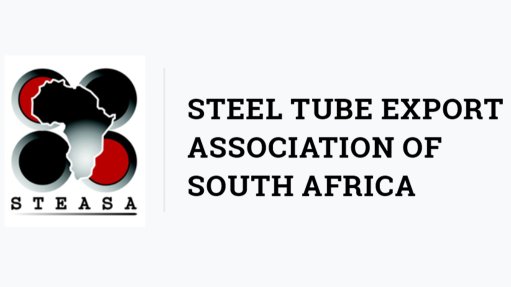South Africa should produce sustainable aviation fuels locally – WWF
Sustainable aviation fuels (SAFs), typically made from bio-based feedstocks such as energy crops, wastes and residues, can help to mitigate the greenhouse-gas emissions from South Africa’s aviation sector, which account for more than 8% of the country's emissions.
It can also help maintain the country's competitiveness in terms of tourism, says World Wide Fund for Nature (WWF) South Africa energy analyst and project officer Farai Chireshe.
Unlike road or rail transport, direct electrification is not a solution for air travel. SAFs are low-carbon, alternative fuels. Global body the International Air Transport Association (IATA), which represents about 83% of total air traffic and which has set a goal of achieving net-zero carbon emissions in the aviation sector by 2050, believes SAFs can mitigate 65% of the industry's emissions in 2050, Chireshe notes.
Further, regulatory support for SAFs is also growing worldwide. For example, the European Union has set SAF blending mandates of 5% and 63% by 2030 and 2050, respectively.
South Africa is well positioned to take advantage of the growing SAFs momentum and build a domestic SAFs sector owing to local competitive advantages such as an excellent resource base for SAF production and experience, with some promising SAF production technologies held by energy companies, he says.
SAFs can also be produced from fossil-waste, such as carbon monoxide-rich industrial waste gas.
Importantly, SAFs are ‘drop-in’ fuels, meaning they can be used in the same equipment and infrastructure as conventional jet-fuel without any modifications, Chireshe highlights.
LOCAL PRODUCTION
WWF South Africa recently published a blueprint for producing SAFs locally using various sustainable feedstocks, including woody invasive alien plants (IAPs). The blueprint shows that South Africa has the immediate technical potential to produce 3.2-billion litres of cost-competitive SAFs a year, following the strictest sustainability requirements, at a one-off capital investment of about $12-billion, or R212.76-billion.
Introducing green hydrogen into the SAFs manufacturing process can extend this potential to 4.5-billion litres a year. This is enough to replace the use of conventional jet fuel domestically up to a maximum blending threshold of 1.2-billion litres a year, while also providing two-billion to 3.3-billion litres for export, Chireshe highlights.
IAPs are the largest sustainable biomass resource in the country, at 217-million dry tonnes. The introduction of IAPs, such as wattle, pine and eucalyptus, has led to the unhealthy conversion of landscapes from climate-adapted, species-rich indigenous vegetation to single-species stands of water-thirsty invasive trees, which threatens biodiversity, water security, the productive use of land and the ecological functioning of natural systems.
"While clearing of IAPs is already under way, it is mostly small scale and most of the cleared biomass is left in the field without value addition, posing a fire risk. Using IAPs for SAF production would result in large-scale clearing activities, with multiple ecological benefits and the creation of thousands of jobs in alien-clearing, as well as in biomass transport," Chireshe says.
Further, the highest achievable localisation of all promising SAF production pathways would provide 40 000 direct and 48 000 indirect jobs during the construction phase, and 46 500 direct and 3 600 indirect jobs over the 20-year operational period.
Additionally, reducing jet fuel imports by developing a domestic SAF industry can improve South Africa’s balance of trade by $7.9-billion a year.
Meanwhile, the full export of all SAF would further improve the balance of trade, generating about $10.6-billion a year from sales at the minimum sale price.
"As a partner in this climate and sustainable investment project, it is clear that investment in local SAF production is key to decarbonising South Africa’s aviation industry and will have several ecological benefits.
"A domestic SAF sector could be a pillar of South Africa's low-carbon economy, playing an important role in the just transition process, and help to address the triple challenges of unemployment, poverty and inequality," Chireshe says.
Transport-related carbon emissions could impact international travel as climate-conscious travelers shun carbon-intensive long-haul flights to our shores. These emissions will also reduce the competitiveness of South Africa’s exports once Europe’s carbon border adjustment mechanism kicks in. Thus, it is necessary to find a solution to address South Africa’s aviation emissions, he adds.
Article Enquiry
Email Article
Save Article
Feedback
To advertise email advertising@creamermedia.co.za or click here
Comments
Announcements
What's On
Subscribe to improve your user experience...
Option 1 (equivalent of R125 a month):
Receive a weekly copy of Creamer Media's Engineering News & Mining Weekly magazine
(print copy for those in South Africa and e-magazine for those outside of South Africa)
Receive daily email newsletters
Access to full search results
Access archive of magazine back copies
Access to Projects in Progress
Access to ONE Research Report of your choice in PDF format
Option 2 (equivalent of R375 a month):
All benefits from Option 1
PLUS
Access to Creamer Media's Research Channel Africa for ALL Research Reports, in PDF format, on various industrial and mining sectors
including Electricity; Water; Energy Transition; Hydrogen; Roads, Rail and Ports; Coal; Gold; Platinum; Battery Metals; etc.
Already a subscriber?
Forgotten your password?
Receive weekly copy of Creamer Media's Engineering News & Mining Weekly magazine (print copy for those in South Africa and e-magazine for those outside of South Africa)
➕
Recieve daily email newsletters
➕
Access to full search results
➕
Access archive of magazine back copies
➕
Access to Projects in Progress
➕
Access to ONE Research Report of your choice in PDF format
RESEARCH CHANNEL AFRICA
R4500 (equivalent of R375 a month)
SUBSCRIBEAll benefits from Option 1
➕
Access to Creamer Media's Research Channel Africa for ALL Research Reports on various industrial and mining sectors, in PDF format, including on:
Electricity
➕
Water
➕
Energy Transition
➕
Hydrogen
➕
Roads, Rail and Ports
➕
Coal
➕
Gold
➕
Platinum
➕
Battery Metals
➕
etc.
Receive all benefits from Option 1 or Option 2 delivered to numerous people at your company
➕
Multiple User names and Passwords for simultaneous log-ins
➕
Intranet integration access to all in your organisation
















